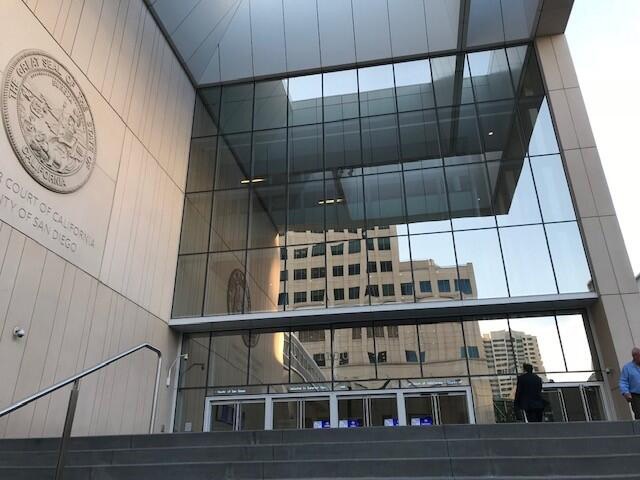By Teri Figueroa
The San Diego Union-Tribune headline news online news
(The San Diego Union-Tribune) — People in the area first heard the startling gunshots and saw a man holding a gun in his backyard. But when San Diego police arrived, the man refused to hand it over — or even admit to having a gun at all.
Officers soon found the gun, and the Feb. 16 encounter in a neighborhood in the southeastern part of the city ended peacefully. But the events of that day led San Diego city prosecutors to secure their first conviction against someone for violating a special restraining order aimed at immediately separating people from their guns.
Gun violence restraining orders, or GVROs, are approved by judges and are intended for crisis intervention. A GVRO requires a person to immediately surrender or sell their firearms and bars them from having guns or ammunition for the duration of the order.
San Diego started using gun violence restraining orders in 2018 and has obtained more of them than any other county in the state. As of the end of last year, law enforcement working with the City Attorney’s Office had seized more than 3,500 guns using the orders.
headline news online news
Supporters hail the orders as a vital public safety measure to intervene in dangerous behavior. Critics decry them as overreach and an affront to the Second Amendment. One local critic argues that San Diego uses them as standard procedure rather than as crisis intervention.
(Please click onto the image of the cat to hear Classical Music)

The recent conviction arises from an unusual case — the violation happened the same day the order was issued.
After neighbors called 911 and reported the gunfire, police surrounded the man’s home and ordered everyone out, said Chief Deputy City Attorney Taylor Hearnsberger of the Special Prosecutions Unit.
Two women exited with two children, ages 1 and 7.
The man who earlier had been seen with the gun also emerged. At first, Hearnsberger said, the 22-year-old admitted having a gun, but police when asked were it was, he backtracked and said there was no gun.
That denial prompted police to call a judge and request that a gun violence restraining order be issued, in order to force the man to immediately hand over any firearms.
The judge OK’d their request over the phone, so police filled out the paperwork on the spot and handed the court order to the man. But he refused to comply with it. “He denied there were firearms in the home,” Hearnsberger said.
“Police officers had every reason to believe that he had been the one that was discharging the firearm. We had every reason to believe that there was a firearm still in the house or somewhere on the property,” the prosecutor said.
headline news online news
Officers didn’t know where the gun was, he said, but they did know that two children were going to be walking back into the house at some point.
Police called the judge again, this time seeking a warrant to search the home. The judge said yes.
Officers found an unloaded gun tucked underneath a refrigerator, the prosecutor said. They found .22-caliber ammunition in the man’s bedroom, and in the backyard they found spent casings and a gallon orange juice container likely used for target practice.
“This is one of those cases where if this all hadn’t come together and if they didn’t do a GVRO and they didn’t demand to get (the gun) right away, we could have had a tragedy on our hands. But this stopped it all,” said Assistant City Attorney Paige Folkman, who oversees the Criminal & Community Justice Divisions.
The man later pleaded guilty to misdemeanors including violating the order to hand over the gun, not storing the gun safely and possessing an assault weapon; the gun had been modified in such a way it was considered an assault rifle under California law. As a condition of his criminal case, the man cannot possess guns for five years.
Earlier this month, the man was sentenced to a year of probation and 30 days in a work furlough program.
Gun violence restraining orders are handled in civil court, not criminal. They are often obtained very quickly after an incident and start out as temporary 21-day orders, followed by a court hearing for a judge to consider extending them.
©2024 The San Diego Union-Tribune. Visit sandiegouniontribune.com. Distributed by Tribune Content Agency, LLC.
headline news online news


